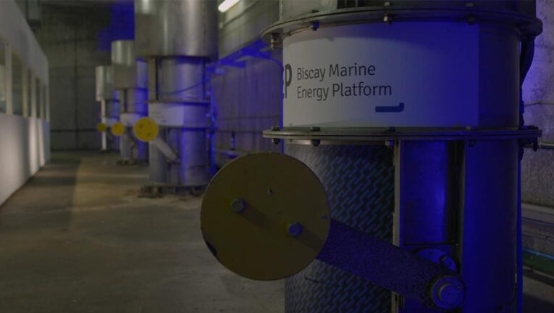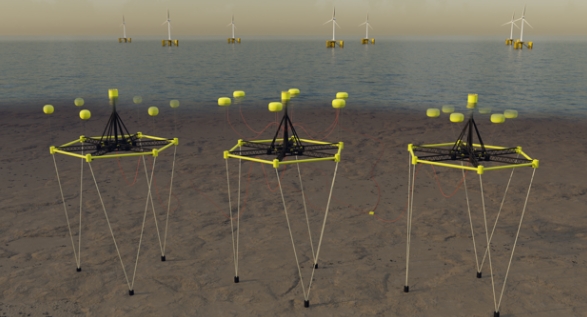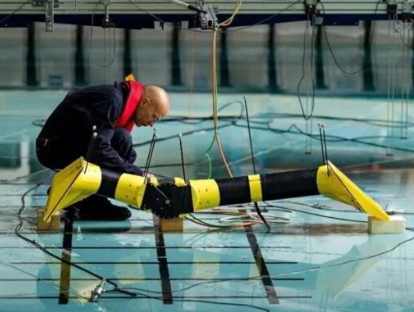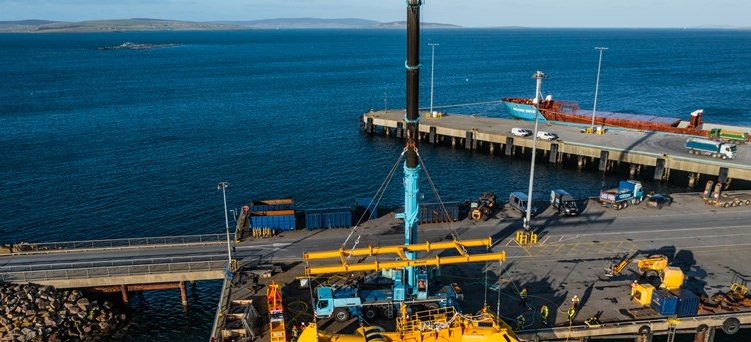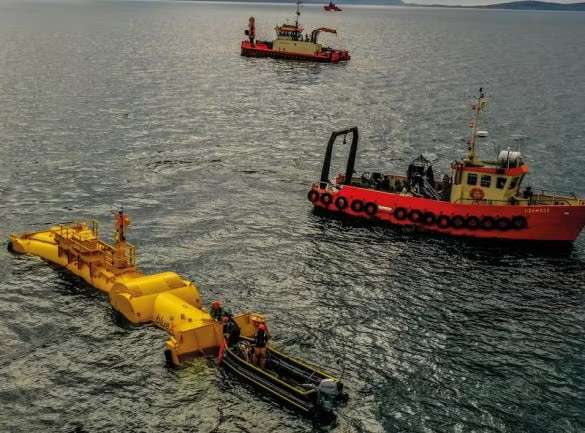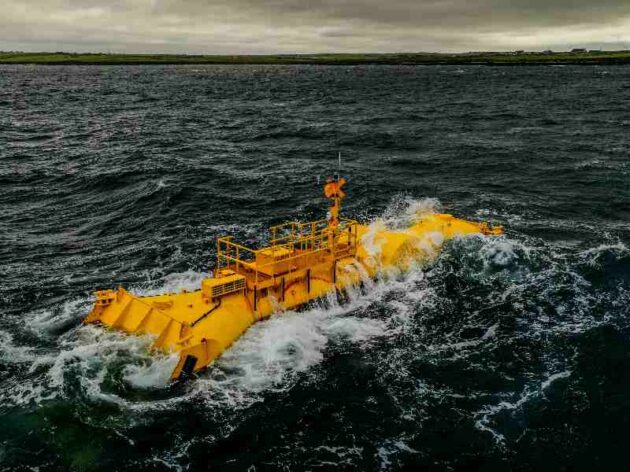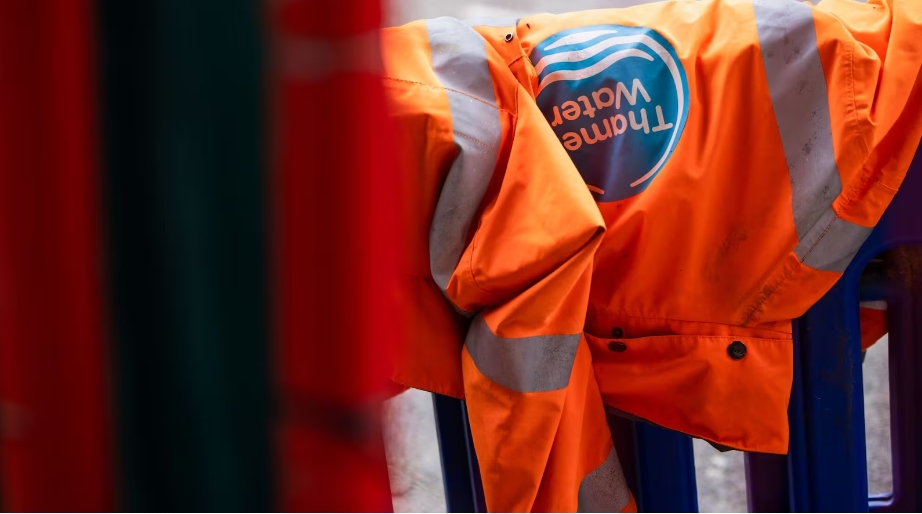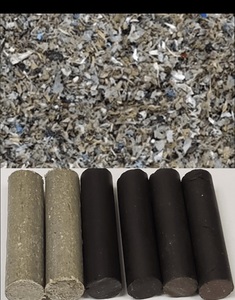
The idea of using biomass or non-recyclable materials to produce power has been around for a long time, but techniques for developing a consistent feedstock to produce a fuel that is economical compared to coal, resistant to moisture, and has no spontaneous combustion in storage has been a daunting challenge. Researchers at Idaho National Laboratory, working with Michigan Technological University and Convergen Energy, a company based in Green Bay, Wisconsin, have pioneered a technique for combining non-recyclable plastics and paper fiber that would otherwise end up in landfills to form pellets with an energy content like bituminous coal.
The key is torrefaction, a thermal process INL has used before, to convert biomass into a coal-like material. Torrefaction uses the mild application of heat, typically between 200°C and 320°C, to make biomass materials more homogenized and consistent while also removing chlorine and other compounds that can turn into harmful gases during combustion.
“We’re trying to find a solution for keeping waste plastics out of the environment,” said Ted Hansen, Convergen’s CEO. While plastic soda bottles and milk containers can be recycled, most of what you walk past on the shelves of your local supermarket — laminated pouches, labels, wax-coated paper — is nonrecyclable and goes to landfills. These plastics take hundreds of years to decompose. (While biodegradable plastics are being developed, in 2021, they represented less than 1% of the plastics made worldwide.)
On the other side of the equation, paper products, while biodegradable, decompose in landfills to create methane, a greenhouse gas 25 times more potent than carbon dioxide. Combining paper and plastic to form stable feedstocks that can substitute for coal and reduce landfill mass would be a green energy win-win.
“Those are our target products,” Hansen said. “Instead of sending them to the landfill, we want to turn them into fuel or upcycled products.”
Applying partnership strengths to collaboration
For years, Convergen has produced an engineered fuel that diverts non-recyclable industrial byproducts away from the landfill to reduce CO2 emissions. Since 2009, the company has supplied fuel pellets to public utilities committed to state-required levels of green energy production and to manufacturers integrating renewable fuels into their operations to reduce coal consumption. Since its inception in 2009, Convergen has diverted over 600,000 tons of materials away from the landfill to off-set coal usage.
Convergen partnered with INL and MTU on a project funded by the U.S. Department of Energy’s (DOE) Bioenergy Technologies Office (BETO) titled Torrefaction of Sorted MSW Pellets for Uniform Biopower Feedstock. Convergen shredded materials to sizes smaller than six inches and shipped them to INL and MTU for processing and testing. INL researchers focused on pellet formation, characteristics, durability, and uniformity through torrefaction, as well as on sample generation for analysis. INL’s analytical-scale torrefaction system played a critical role in informing their university partner on the larger scale torrefaction system. Meanwhile, MTU researchers collected process data and generated samples for analysis and cross-system validation.
Advances in compacting nonrecyclable plastics into pellets
Whether they come from non-recyclable materials or biomass residue, before torrefied fuels can be widely accepted as an inexpensive source of green energy generation, they must be chemically and physically uniform, weather resistant, and stable enough to transport and store. Product uniformity is essential for compatibility with fuel sale agreements like those required by fuel boilers, where consistent heating content is certified along with contaminants and inorganics levels. With any biomass, pellet storage is a challenge if not managed properly. Whether it’s hay in a barn or wood pellets in the hold of a cargo ship, self-heating and spontaneous combustion become a serious and potentially catastrophic problem if biomass gets wet. There can also be environmental and health and safety problems related to off-gas emissions.
Being energy dense and hydrophobic in nature, torrefied biomass has been identified as a safer replacement. Through their collaboration, Dr. Jordan Klinger and Eric Fillerup of INL, Dr. Ezra Bar-Ziv of MTU, and Hansen discovered that nonrecyclable plastics can help increase pellet density while improving safety. Due to its softness at elevated temperatures and pressures during compaction, plastic provides a skeletal structure that encapsulates the fiber and forms a barrier to keep oxygen and water from reacting with torrefied fibers. This reduces the self-heating that can lead to spontaneous combustion.
With the material Convergen shipped to INL, Klinger and Fillerup investigated size reduction techniques in pursuit of a specific average particle size, densifying and applying torrefaction conditions at INL’s Biomass Feedstock National User Facility. The ¼-½” pellets were of uniform geometry and composition and were tested for composition, fuel properties, emissions, and contaminants (particularly chlorine). These processing methods were adapted to the composition of the incoming waste feedstock, resulting in a much cleaner burning fuel.
To demonstrate the feasibility of the process, the end goal was to produce at pilot scale (more than 10 kilograms per hour) uniform pellets with at least the comparable energy of bituminous coal. The samples used in the study were from a fiber-plastic waste blend (40% plastic and 60% fiber) derived from a large variety of paper, laminated papers, plastics, and fibers with known impurities. Convergen removed ferrous metals using a strong electric magnet, while non-ferrous metals were removed manually. The material was then shredded to 75-125 mm particle size by a shear grinder and then air-dried to 5-7% moisture content level.
The tests aimed to reduce the amount of chlorine and sulfur to levels comparable to those from bituminous coal use. By the end of the project, in September 2021, the process development and implementation at MTU achieved all of these goals, producing pellets at over 100kg/hr.
Implications for future energy opportunities using waste
Convergen has been working with MTU to develop a commercial demonstration unit in Green Bay. “We already process large quantities of non-recyclable paper and plastics,” Hansen said. “The goal now is to expand the types and quantities of materials we can use at an even larger scale.”
For INL, the project has multiple implications. Klinger said, “The INL study documents technical barriers to how these materials can be transformed to the preferred set of characteristics Convergen requires from their fuel. Honestly, I think it has potential to be a near-term solution to generate energy and address accumulating wastes. This is something we can do today.” In the longer term, INL researchers are pursuing a material processing pathway to create pellets as a source material for advanced fuels and chemicals currently sourced from fossil fuels.
